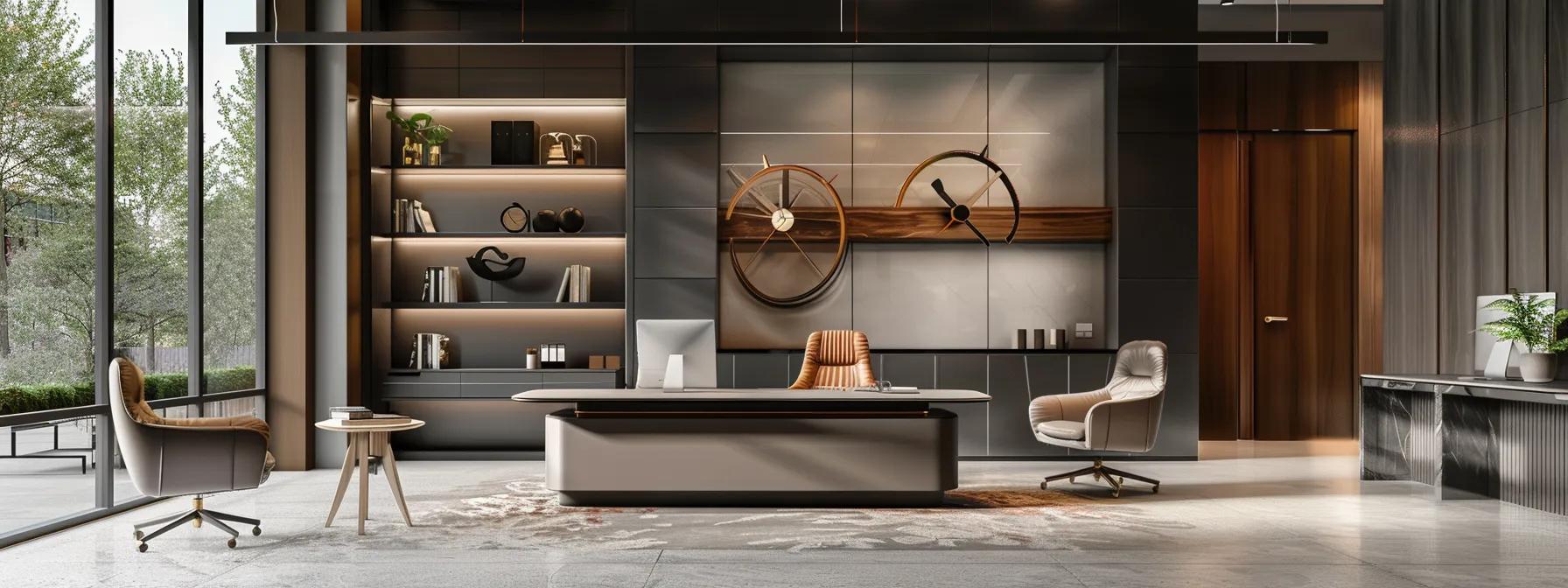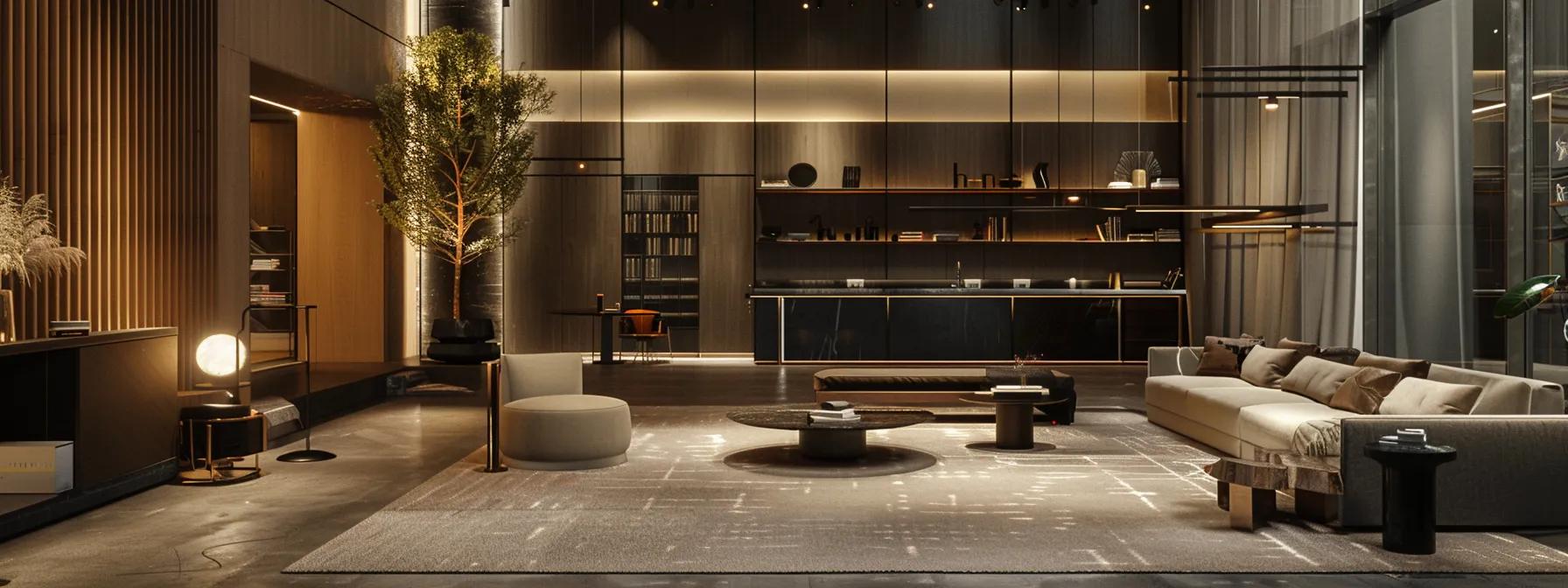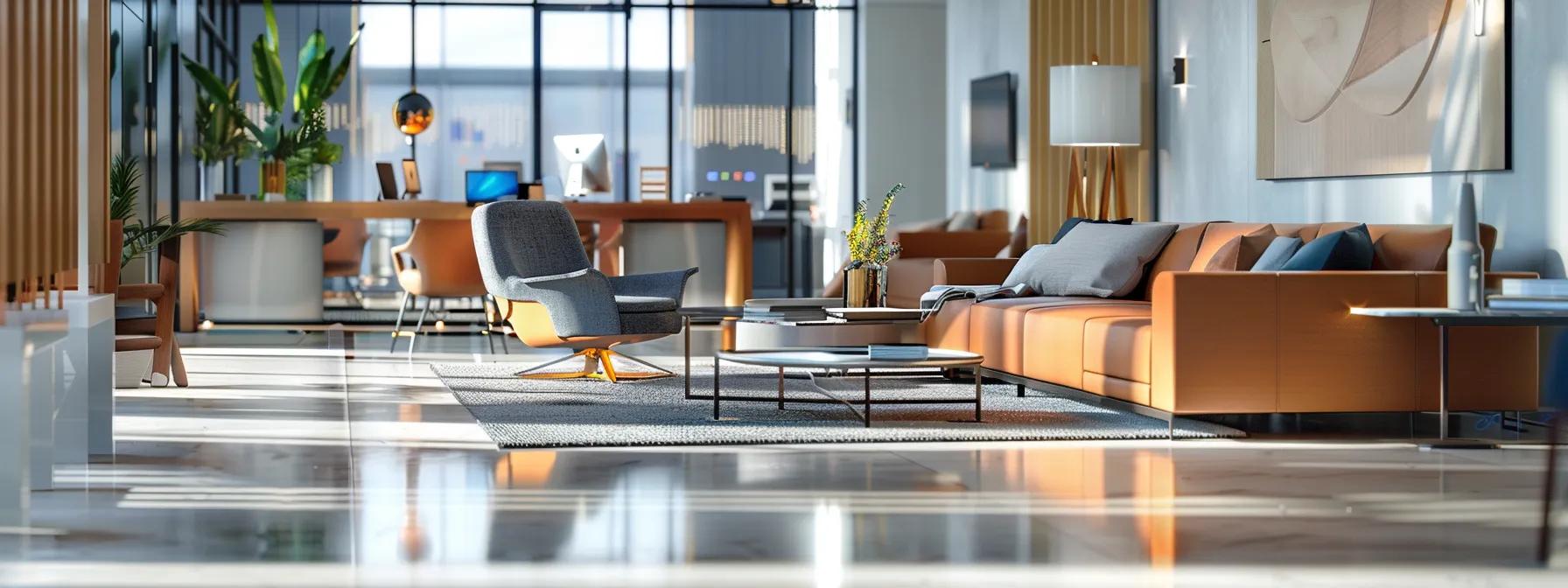
How to Spot Quality Furniture That Lasts: Key Signs, Materials, and Inspection Tips
Furniture is more than functional décor—it’s an investment in comfort, style, and long-term living quality. Whether upgrading your home or shopping at midstate furniture, you need pieces that look good and can endure daily wear and tear. This article explains key signs and inspection tips to help you identify quality furniture that lasts through material choices, craftsmanship, warranties and brand reputation, and practical maintenance advice. For additional guidance and creative ideas, explore our blogs that dive into design trends and maintenance tips.
Throughout this article, you’ll find examples, technical insights, and practical checklists to guide your decision-making. Let’s delve into the critical aspects every buyer should know.
What Are the Most Important Signs of Quality Furniture?
The primary sign of quality furniture is the choice of materials. High-quality pieces use durable materials that stand up to everyday use. Solid wood and high-grade metals, for instance, offer strength and longevity compared to cheaper alternatives.
How Does Material Choice Affect Furniture Durability?
Furniture durability directly relates to its materials. Hardwood options like oak, walnut, or maple have robust grain structures and resist wear naturally. Cheaper alternatives, such as particleboard or MDF, tend to degrade over time. Real hardwood can last decades with proper care, while engineered wood may require more frequent attention. High-quality finishes and stains further enhance appearance and longevity.
Why Is Craftsmanship a Key Quality Indicator?
Craftsmanship is essential. Expert joinery techniques—such as dovetail and mortise-and-tenon joints—indicate careful construction and structural integrity. Pieces that are hand-finished or assembled with precision reflect the designer’s commitment to durability. Even gaps, secure joins, and precise finishes all signal that the furniture is built to withstand daily stress.
What Role Do Warranties and Brand Reputation Play?
Warranties provide evidence of a manufacturer’s confidence. Brands invest in quality control and offer warranties ranging from five to twenty years. Positive customer testimonials and reviews reinforce trust. For example, Mid-State Furniture is known for quality materials, strong after-sale service, and solid warranties, reassuring buyers that their furniture is designed to last.
How Can You Use a Furniture Inspection Checklist Before Buying?
A detailed inspection checklist is invaluable. Begin by examining the material and finish for smooth, even surfaces and resistance to scratches. Test joinery and hardware for stability, and verify that warranties and product details meet expectations. A simple checklist might include: - Inspecting material type (solid wood vs. composite) - Examining joinery and hardware - Checking for an even finish - Confirming warranty terms and customer support - Evaluating overall design for durability and aesthetics
Which Are the Best Materials for Long-Lasting Furniture?

When selecting furniture, the chosen materials must balance durability with aesthetics.
What Are the Benefits and Drawbacks of Solid Wood?
Solid wood is the gold standard due to its natural beauty, strength, and reliability. With proper maintenance, it can last generations and be refinished to restore its luster. However, it is typically more expensive and can be susceptible to cracking or warping in extreme climates. Despite these challenges, many buyers find its timeless appeal justifies the investment.
How Does Engineered Wood Compare to Solid Wood?
Engineered wood (plywood, MDF, particleboard) offers a cost-effective alternative with reasonable durability. It can mimic the look of solid wood when finished with veneers. Although less prone to warping and often more environmentally conscious in use, its overall strength and lifespan may not match high-quality solid wood, particularly in high-use areas.
What Types of Leather and Fabric Offer Durability?
For upholstery, durability is key. Top-grain leather, for example, ages gracefully and resists wear, tear, and spills. Fabrics like microfiber or tightly woven textiles offer excellent stain resistance. Natural fibers, while comfortable and appealing, may demand more upkeep. The choice ultimately depends on lifestyle, usage, and maintenance preferences.
How Do Metal and Other Materials Contribute to Furniture Longevity?
Metal components, such as steel or aluminum, add structural support and are less likely to bend or break. Often used to reinforce wood or create modern designs with tempered glass or quality plastics, metals contribute significantly to both durability and style without compromising design aesthetics.
Below is a summary table comparing common furniture materials:
| Material | Durability | Maintenance Level | Aesthetic Appeal | Long-Term Value |
|---|---|---|---|---|
| Solid Wood | Very High | Moderate (refinishing) | Classic and Timeless | Excellent |
| Engineered Wood | Moderate | Low | Versatile, Budget-Friendly | Good |
| Top-Grain Leather | High | Low to Moderate | Luxurious and Evolving | High |
| Microfiber | High | Low | Contemporary, Easy Care | Good |
| Metal (Steel) | Very High | Very Low | Industrial, Modern | Excellent |
| Tempered Glass | High | Low | Sleek, Reflective | Good |
How Do Construction Techniques Influence Furniture Quality and Longevity?
Even the best materials can fail if construction methods are poor. Every joint and seam influences a piece’s durability.
What Are Dovetail Joints and Why Are They Important?
Dovetail joints are a hallmark of fine woodworking, especially in drawers. Their interlocking design prevents separation under stress and adds a traditional, hand-crafted appeal, clearly indicating skilled craftsmanship.
How Do Mortise and Tenon Joints Enhance Strength?
Mortise and tenon joints join pieces of wood with a projecting tenon fitting into a matching mortise, creating a strong bond that resists wobbling. This method is particularly valued in table and chair construction, where stability is crucial.
What Are Spring Systems and Their Benefits in Upholstered Furniture?
In upholstered furniture, spring systems provide resilience and support by helping cushions regain their shape. Combined with high-density foam, a robust spring system helps distribute weight evenly and prevents sagging, enhancing overall comfort and durability.
How Does Frame Construction Affect Durability?
The frame is the backbone of furniture. Frames built of quality wood or metal with reinforced joinery and cross-bracing are far sturdier and distribute weight more evenly. A well-constructed frame resists wear and minimizes stress on any single point, ensuring long-term stability.
How to Perform a Furniture Inspection: A Step-by-Step Checklist

Before making a purchase, a comprehensive inspection can prevent future hassles and expenses. Evaluate materials, construction, warranties, and overall functionality using this practical checklist.
What Should You Look for in Materials and Finish?
Examine the finish for uniformity and smoothness. Wood should reveal a consistent grain without bubbles or scratches, while upholstered pieces should have secure seams and no fading. Leather should be supple, not brittle.
How to Check Construction Details and Hardware Quality?
Test the stability of joints through gentle pressure. Look for tight, gap-free connections—whether dovetail, mortise and tenon, or others. All hardware, like screws and bolts, must be secure and corrosion-resistant to ensure a firm assembly.
What Questions Should You Ask About Warranties and Brand Support?
Ask what the warranty covers and for how long. Research the brand’s history and customer service reputation to ensure long-term support and satisfaction.
How to Assess Comfort and Functionality During Inspection?
Test chairs, sofas, and benches for ergonomic support. Check that drawers slide smoothly, doors open easily, and all adjustable features work as intended.
A simplified checklist might include: - Consistent grain and secure veneer - Tight joinery with no gaps - Secure hardware with no wobbling - Clear warranty terms and responsive service - Comfortable and functional design
Which Furniture Brands Are Known for Quality and Durability?
Several brands have earned reputations for quality, durability, and excellent customer service. Knowing these brands can help you make more informed purchasing decisions.
What Are the Top Brands for Long-Lasting Sofas and Chairs?
Top-tier brands such as Mid-State Furniture use high-quality materials and expert construction techniques. Their sofas and chairs are designed for durability, with repair or refurbishment options often available. Customer reviews and warranty details help signal a lasting investment.
How Do Brand Histories and Values Reflect Quality?
Long-established brands with proven track records invest in sustainable sourcing, innovative design, and strict quality control. Their heritage and mission statements often emphasize durability and customer satisfaction over mere price competition.
Where Can You Find Reliable Reviews and Comparisons?
Reliable reviews and comparisons are available in consumer magazines, industry websites, and online platforms. Word-of-mouth recommendations from friends or family can also provide balanced insights into a brand’s performance.
How Do Brand Warranties and Customer Service Impact Longevity?
A generous warranty and responsive customer service are strong indicators of durable furniture. These factors ensure that should any issues arise, the brand supports its product for years to come.
Below is a table outlining some of the top furniture brands known for quality and durability:
| Furniture Brand | Notable Products | Warranty Offer | Key Quality Indicator |
|---|---|---|---|
| Mid-State Furniture | Sofas, Chairs, Beds | 10–15 years | Premium materials and build |
| Heritage Designs | Classic Wood Pieces | 10 years | Timeless design and craftsmanship |
| Urban Living | Modern, Versatile Sets | 8–12 years | Innovative design and easy maintenance |
| Luxe Home | Upholstered Sofas | 10 years | High-quality upholstery and frames |
| Eco-Furnish | Sustainable Collections | 8 years | Eco-friendly materials and practices |
What Are the Best Furniture Care and Maintenance Tips to Extend Longevity?

Even the highest quality furniture benefits from proper care and maintenance. Regular attention keeps pieces looking great and functioning well.
How Should You Clean and Protect Different Furniture Materials?
For wood, use a soft, damp cloth and a specialized cleaner to preserve the finish. Upholstered pieces should be vacuumed and spot-cleaned, while leather benefits from conditioning products. Metal surfaces can be polished with a microfiber cloth and protective polish, and regular dusting helps maintain surface integrity.
When and How Should You Repair or Refinish Furniture?
Minor scratches, dents, or loose joints should be addressed promptly to avoid further damage. Refinishing older pieces can restore their look and strength. For complex repairs, consult professionals to ensure the best results.
What Are Sustainable Practices for Caring for Quality Furniture?
Using eco-friendly cleaners and minimal water helps reduce environmental impact. Regular dusting, preventive care, and responsible recycling of damaged parts contribute to both the longevity of your furniture and environmental conservation.
How Does Regular Maintenance Affect Furniture Lifespan?
Consistent inspections and maintenance extend the life of your furniture by catching early signs of wear. A routine schedule of cleaning, checking joints, and refinishing as needed prevents gradual degradation and protects your investment.
Essential maintenance tips include: - Cleaning surfaces regularly with appropriate products - Periodically inspecting joints and hardware - Addressing minor damages immediately - Using protective coverings in extreme conditions - Scheduling professional refinishing when needed
How Does Sustainability Influence Quality Furniture Choices?
Sustainability is increasingly important in furniture selection. Eco-friendly products often maintain high durability and quality while minimizing environmental impact.
What Sustainable Materials Are Best for Durable Furniture?
Materials such as reclaimed wood, bamboo, and recycled metals offer both durability and unique aesthetics. Reclaimed wood not only looks distinctive but also repurposes resources, while bamboo is renewable and strong. Recycled metals provide robustness with a lower environmental footprint.
How Do Certifications and Sourcing Affect Furniture Quality?
Certifications like FSC or Cradle to Cradle indicate responsible sourcing and production practices. These labels reassure buyers that the materials and manufacturing processes adhere to high environmental and quality standards.
Why Choose Brands Committed to Sustainable Practices?
Brands focused on sustainability invest in quality production methods and durable design. Their commitment to ethical sourcing and environmental responsibility often translates into products that last longer and come with strong warranties and customer support.
How Can Sustainable Furniture Still Offer Longevity and Durability?
Sustainable furniture is designed for longevity. Despite using alternative materials, such pieces incorporate rigorous construction techniques—like dovetail joints or reinforced frames—to ensure durability. With regular maintenance, sustainable options can rival or exceed the longevity of conventional furniture.
Below is a summary table comparing sustainable materials:
| Sustainable Material | Key Benefit | Durability Rating | Environmental Impact |
|---|---|---|---|
| Reclaimed Wood | Unique aesthetics, repurposing | High | Low (Recycling) |
| Bamboo | Rapid renewal and toughness | High | Very Low |
| Recycled Metal | Robustness and longevity | Very High | Low |
| FSC-Certified Wood | Responsible harvesting | High | Low |
| Eco-Friendly Composites | Versatile and durable | Moderate to High | Moderate |
Final Thoughts
Identifying quality furniture means paying close attention to materials, craftsmanship, and construction techniques. By understanding material choices, assessing joinery, and using a comprehensive inspection checklist, you can invest confidently in pieces designed to stand the test of time. With proper care and a commitment to sustainable practices, quality furniture not only enhances your living space but also supports responsible consumption. A thoughtful purchase today brings lasting comfort, style, and peace of mind for tomorrow.
Frequently Asked Questions
Q: What should I prioritize when inspecting furniture for durability? A: Focus on material quality, joinery techniques like dovetail and mortise-tenon joints, and finishing details. These ensure your furniture withstands daily use. Asking about warranties and brand support adds an extra layer of confidence.
Q: How can solid wood furniture be maintained effectively? A: Use a soft, damp cloth with specialized wood cleaners and apply wax or oil to preserve the finish. Avoid extreme humidity and direct sunlight, and consider periodic refinishing to restore its look.
Q: Are engineered wood pieces as durable as solid wood furniture? A: Engineered wood, such as plywood or MDF, balances cost and durability. It resists warping better but may not match the lifespan of high-quality solid wood under heavy use. Evaluate based on your budget and usage needs.
Q: What maintenance practices extend the life of upholstered furniture? A: Regular vacuuming, prompt stain removal, and using fabric protectors help. For leather pieces, conditioning prevents cracking. Even weight distribution and periodic professional cleaning further enhance longevity.
Q: How do warranties factor into determining quality furniture? A: A strong warranty indicates that the manufacturer stands behind the product. Extended warranties covering structural defects suggest high build quality and can save on repair costs.
Q: What sustainable materials are best for durable furniture options? A: Reclaimed wood, bamboo, and recycled metals are excellent choices. They offer durability, reduced environmental impact, and unique aesthetics, especially when backed by certifications like FSC.
Q: Can I combine different materials in one piece of furniture for enhanced durability? A: Yes. Combining materials—such as solid wood with metal reinforcements—can maximize strength, aesthetic appeal, and functionality, resulting in a well-balanced and durable piece.

